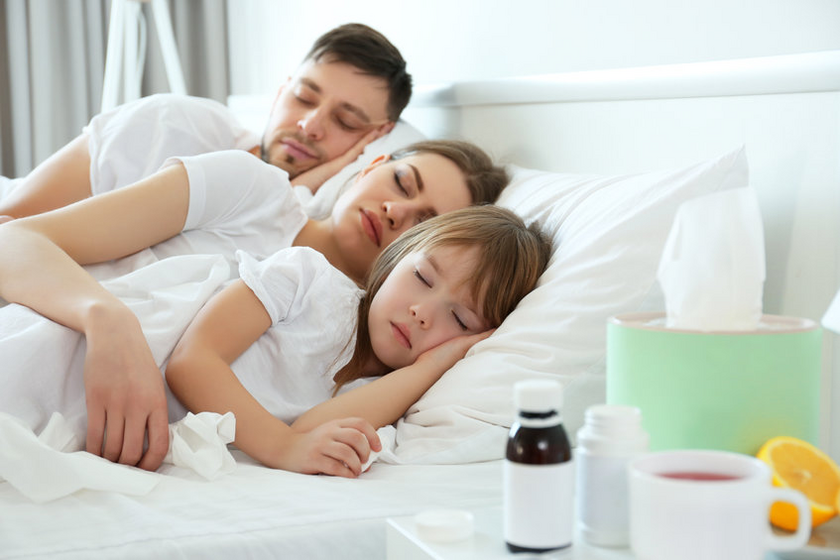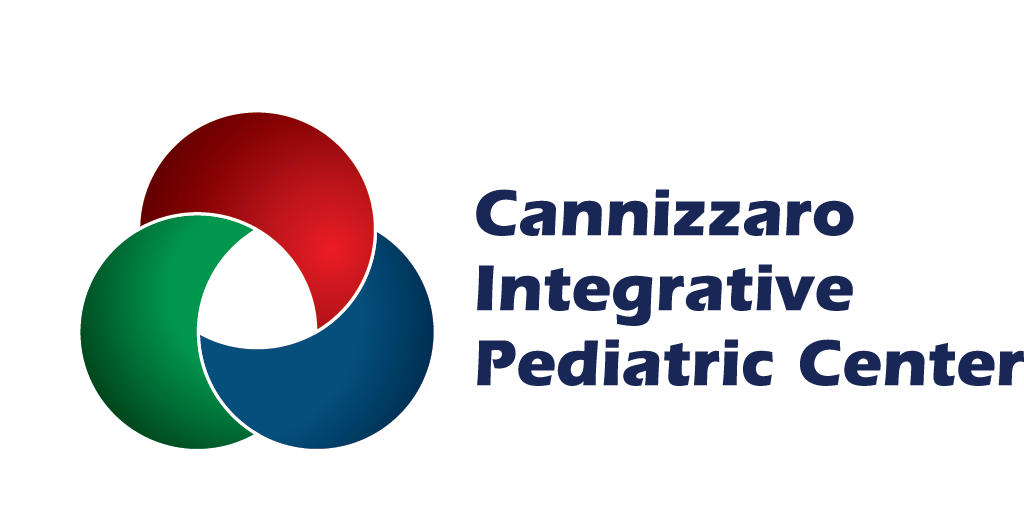
Most childhood illnesses are common, natural and necessary for correct immune system development. Growing bodies have immature immune systems; therefore, kids get sick more often than adults do. The regular exposure to “germs” when we’re little helps build immune systems that recognize and defeat illnesses later in life. Described below are three childhood illnesses that parents typically don’t need to panic about, along with information on how to naturally relieve symptoms and when to see your health care provider.
Does Ear Pain Always Indicate an Ear Infection?
Between the ages of one and five, it’s common for kids to complain of ear pain when they have a cough, cold or congestion. But don’t be surprised if your provider says the ear pain is due to just some fluid behind the eardrum and not an actual ear infection. Since ear fluid is not an infection, an antibiotic is not needed.
For example, when you have a cold and your ears feel stopped up, you might rub your ear and think, “huh!” because you can’t hear very well. That’s because you have some fluid behind your eardrum, but you usually don’t have an ear infection. It throws your hearing off for a few days. It can cause pressure and pain. But you know these symptoms came with a cold and that they will cease when the cold goes away.
An ear infection is present when the eardrum is red AND bulging. That can only be determined by a provider looking into the ear with an otoscope. More than half of all ear infections are caused by a virus—which is what causes colds. In children under two years old, it is often advised to prescribe antibiotics to be on the safe side in case the infection is bacterial, but in older children we can usually take a watchful, waiting approach. In this case, we prescribe an antibiotic if symptoms worsen or do not improve in a day or so. Holistic measures can be used to provide comfort in these cases.
Natural Therapies for Ear Infections
Everything inside the head is connected. When the nose is congested, the ears can be congested (fluid behind the eardrum) and the throat can be sore. So, using comfort measures for all these symptoms will help. Ear drops containing garlic and willow oil soothe discomfort. Chiropractic adjustments can help clear effusions (fluid behind the middle ear). Salt therapy sessions help decrease inflammation and increase drainage in the upper respiratory system. These methods and the “tincture of time” will resolve most cases.
When Might You Need to Call Your Pediatrician Regarding Ear Pain?
Call your provider about ear pain when it is significantly impacting your child’s quality of life. Specifically, if there is inconsolable fussiness, if there are continuous or unrelieved high fevers, if your child won’t eat or drink, or isn’t comfortable enough to sleep or play. Your child should also see a provider if there is ever pus or bloody drainage coming from the ear.
It’s not unusual to examine children for a well checkup weeks after they’ve had a cold and still see fluid behind the ear. Fluid can sometimes take up to a month or so to resolve. If fluid lasts for more than three months and affects hearing, it needs to be investigated. Young children need to hear well to properly acquire speech, so we don’t let that persist for long periods of time.
Is a Snoring Child Something to Worry About?
Light snoring is not uncommon in kids. But if they snore loudly every single night, make choking or gasping sounds and they’re restless sleepers who don’t wake well rested, then we must take a closer look. During the school-age years, it’s not unusual for a child’s tonsils to look big. Tonsils are lymph tissue and are part of the immune system. Kids are exposed to a lot of viral illnesses and the lymph tissue swells as a means of primary immune defense. In fact, as we age, our tonsils don’t necessarily get smaller; our throats grow bigger and allow more space for the tonsils. By puberty, the throat is generally adequately sized to house the tonsils such that it is difficult to even see them.
If kids are sick with a cold or flu, have allergies or are eating or drinking (other than water) too close to bedtime, they can snore more. People who can breathe well through their nose typically don’t snore much at night. Mouth breathing at night is often what causes snoring. So, if we can improve the function of the nose, it will decrease the likelihood for significant snoring.
What Does the Adenoid Have to Do with Snoring Issues?
The adenoid is the “cousin” of the tonsils and is also lymph tissue. The adenoid is found in the far back of the nose, in the middle of the head. You can’t see it by just by looking in the front of the nose; however, oftentimes if the tonsils are large, the adenoid will be large too. And when adenoid tissue is chronically large, it can cause kids to snore at night, even if their tonsils aren’t big. Children with an enlarged adenoid tend to breathe through their mouths, day and night, often for weeks or months on end, which can be a quality-of-life issue.
Can Children Have Sleep Apnea?
In children, and more commonly in children carrying extra weight, large tonsils and adenoid can obstruct the back of the throat and cause long pauses between breaths during sleep followed by choking/gasping noises and restless sleep, which may indicate pediatric sleep apnea is present. Do we need to intervene for that? If the above sleep breathing problems are occurring every night for a month or more when a child is NOT sick with a cold, a sleep study might be indicated to see if obstructive sleep apnea is present. If it is, and especially if it is moderate or severe, removal of the large tonsils/adenoid may be indicated. That would be determined by an ear, nose, throat provider.
Natural Remedies for Snoring Not Associated with Sleep Apnea
Often, enlarged tonsils and/or adenoid (and the resulting snoring) are caused by a viral upper respiratory infection and all symptoms will settle down as the infection recedes over a couple of weeks.
To help with snoring issues, we use remedies that decrease inflammation in the upper airways (from the throat up). Saline nasal sprays and diffused essential oils like eucalyptus help open the nasal passages. Vitamin C is a natural antihistamine and elderberry helps boost the immune system. Salt therapy sessions decrease inflammation and help increase drainage. Phlegm is our friend when we get sick because it traps the virus or the bacteria and helps us cough it out. It’s the body’s way of clearing out unwanted invaders. Since little kids swallow phlegm, a salt therapy session helps to keep their mucus thin so that they can easily blow it out or cough it out.
How to Know If It’s Strep Throat
Sore throats are common in kids, especially from the ages of about five to fifteen. The vast majority of these are viral infections (not strep throat, which is a bacterial infection) and do NOT need an antibiotic. Infectious disease doctors tell us that strep throat infections are rare in kids under four years old and that the tests we use will often give false-positive results in this age range; unfortunately, this can lead to the unnecessary use of antibiotics.
Strep throats are usually accompanied by a fever, rash, headache and/or a tummy ache. They do not usually occur in the setting of cough/cold/congestion. When your child exhibits that constellation of symptoms, go to your pediatrician, who will swab your child’s throat. If it is strep throat, an antibiotic is indicated—not to help the sore throat itself as that will go away on its own—but instead to help prevent secondary effects of the strep infection that can lead to disease of the heart valves (rheumatic fever) or the kidneys. If the strep swab is negative, an antibiotic is not indicated because the soreness is from a virus. The throat will get better, and natural remedies can help a sore throat feel better in the meantime.
Soothing Remedies for a Sore Throat
If your child has a sore throat, you can choose to manage pain with acetaminophen or ibuprofen, or you can choose to ride it out with extra fluids and some natural measures to relieve the symptoms. Natural measures can include silver spray, elderberry, warm bone broths, cool liquids and throat lozenges.
Should Tonsils Be Removed If My Child Gets Strep?
There are two indications for tonsillectomy. One is obstructive sleep apnea proven by a sleep study, as discussed above. The other is recurrent strep throat defined as more than seven strep throats in one year, more than five strep throats per year for two years in a row, or more than three strep throats a year for three years in a row. Most children outgrow frequent strep throat without needing their tonsils removed.
We hope knowing the facts about common childhood illnesses puts your mind at ease, clarifies what you can do and when you need the aid of your pediatrician.

Gail Ezell, APRN, draws on over 43 years of nursing experience to educate, support and treat her patients. At the Cannizzaro Integrative Pediatric Clinic, she works collaboratively with families to share empowering health information and enhance their wellbeing in a more natural way. Gail’s 24-year career as a pediatric nurse practitioner has centered around pediatric otolaryngology (ear, nose, throat).
For a free meet and greet, visit www.MyCIPC.com or call 321-280-5867. To schedule a salt therapy session at The Salt Room Longwood (located inside the practice) visit www.SaltRoomLongwood.com or call 407-862-1163.
Image Copyright: 123rf/belchonock





